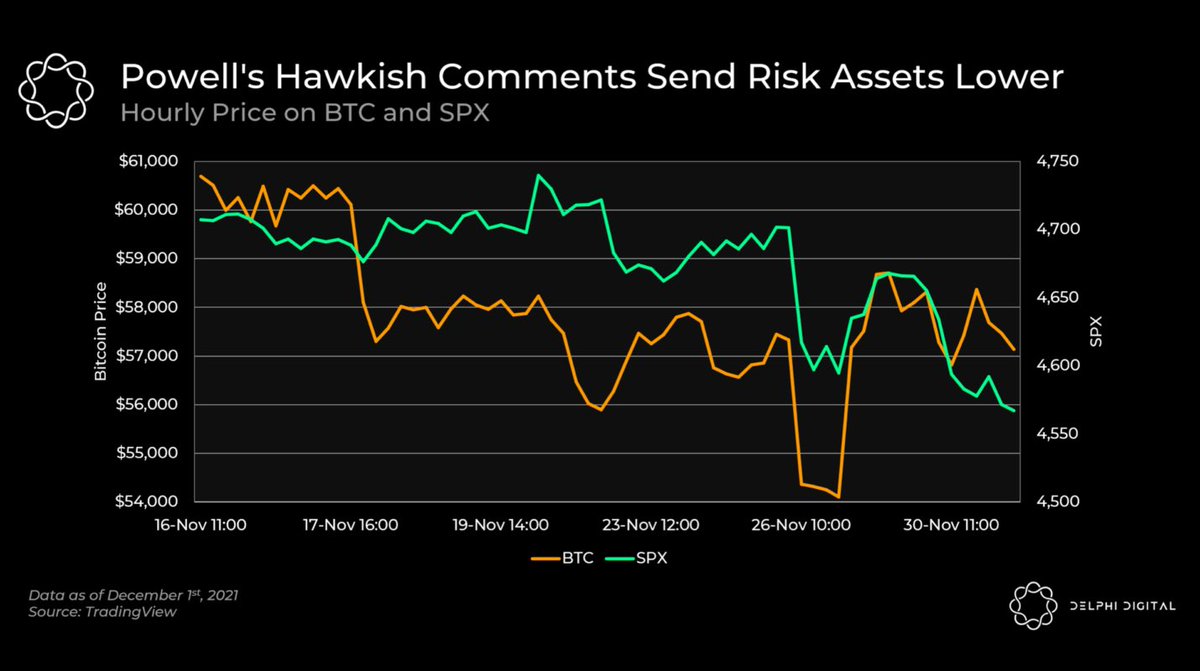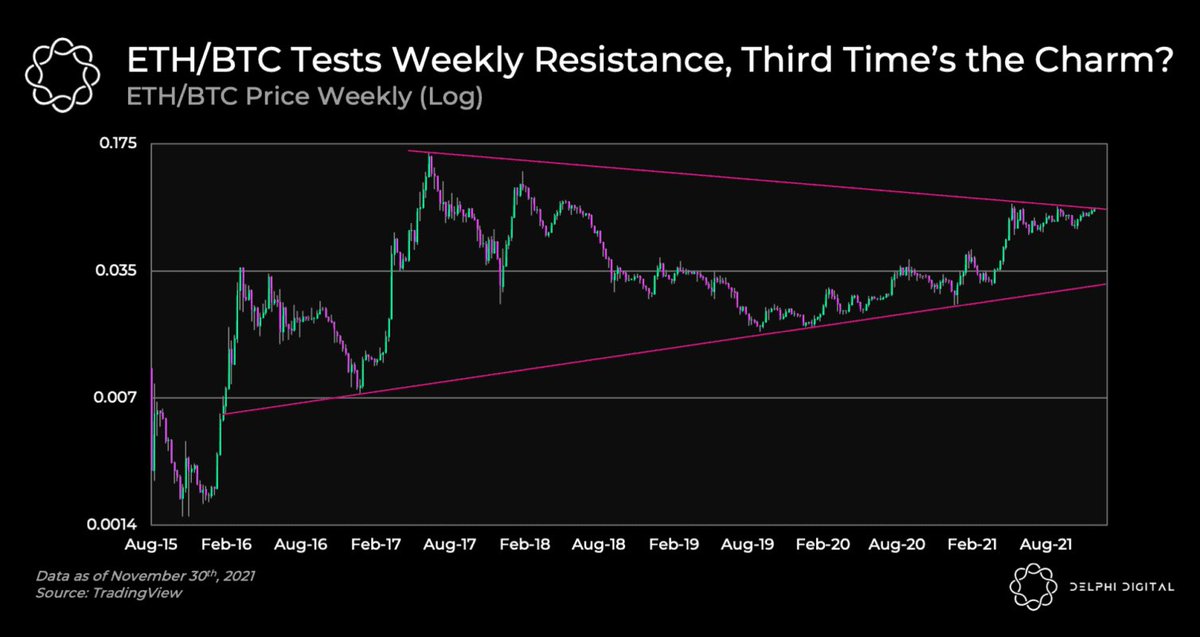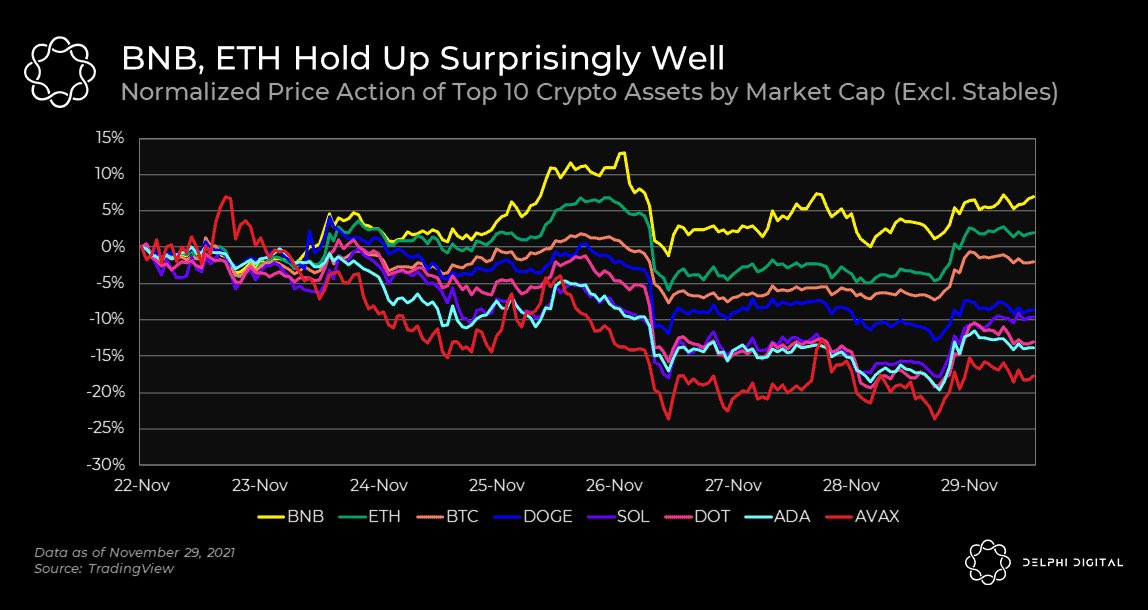
At Delphi, we’ve spent a lot of time working on token launch mechanisms
Today, we’re excited to release a model we believe is best in class when optimizing for a mix of:
🔹Distribution
🔹Price discovery
🔹Sufficient float
🔹Liquidity
🔹Decentralization
members.delphidigital.io/reports/introd…
Today, we’re excited to release a model we believe is best in class when optimizing for a mix of:
🔹Distribution
🔹Price discovery
🔹Sufficient float
🔹Liquidity
🔹Decentralization
members.delphidigital.io/reports/introd…
1/ It's a beefy article so we've also included a video of @ZeMariaMacedo + @YanLiberman discussing the lockdrop + LBA
In this thread, we'll cover the design goals we were trying to achieve and why we settled on this structure is the best way to do so
In this thread, we'll cover the design goals we were trying to achieve and why we settled on this structure is the best way to do so
2/ The goal of any token launch mechanism is to distribute tokens to the protocol’s users and community in a fair, transparent way
There are two main ways projects currently do this:
(1) Giving tokens to users
(2) Selling tokens to the public
Both have flaws
There are two main ways projects currently do this:
(1) Giving tokens to users
(2) Selling tokens to the public
Both have flaws
3/ 1⃣ Giving tokens to users
There are 2 main ways protocols give tokens to users: airdrops and ongoing incentives
Airdrops distribute tokens to users based on their past actions, either because they used the protocol before or were high value users of other protocols
There are 2 main ways protocols give tokens to users: airdrops and ongoing incentives
Airdrops distribute tokens to users based on their past actions, either because they used the protocol before or were high value users of other protocols
4/ While this seems like a good idea, airdrops reward past behaviour rather than future commitments and thus aren’t guaranteed to benefit the protocol going forward
In fact, our research shows the majority of airdrops simply get dumped
In fact, our research shows the majority of airdrops simply get dumped
5/ Ongoing incentives instead aim to reward ongoing participation in the protocol (generally some form of liquidity provision) and have become the preferred method of distribution for most projects
However, relying solely on this also comes with a few drawbacks
However, relying solely on this also comes with a few drawbacks
6/ Firstly, ongoing incentives can only be used to reward use that can be represented by an on-chain action such as providing liquidity, collateral, or completing trades
This benefits whales who have more capital and thus earn a higher share of rewards
This benefits whales who have more capital and thus earn a higher share of rewards
7/ It also excludes a variety of other stakeholders who add value to protocols such as community members, third-party integrators or even projects building on top of protocols
For these stakeholders, acquiring the token on the market may be the only way to align incentives
For these stakeholders, acquiring the token on the market may be the only way to align incentives
8/ Secondly, simply handing out the token to supply-siders results in additional problems like low initial float, low initial liquidity and lack of a mechanism for price discovery
9/ This harms non-users who want to buy tokens on the open market and either can’t do it in size or get rekt by low liquidity price moves and/or continuous selling pressure from token emissions on low float
10/ 2⃣ Selling tokens to the public
Many projects try and solve these issues by having some kind of public sale which helps establish a price and, if properly designed, gives everyone the chance to buy the token on equal terms
Unfortunately, this has its own set of problems
Many projects try and solve these issues by having some kind of public sale which helps establish a price and, if properly designed, gives everyone the chance to buy the token on equal terms
Unfortunately, this has its own set of problems
11/ Firstly, all public-sale-type mechanisms expose the projects to heightened regulatory risks
Sales involve a clear “investment of money” and early-stage protocols are most likely to depend on the efforts of a small group under the “Howey test”
Sales involve a clear “investment of money” and early-stage protocols are most likely to depend on the efforts of a small group under the “Howey test”
12/ Secondly, public sales don’t solve the low-initial-liquidity problem
While projects can add initial liquidity themselves, this requires significant capital and also exposes them to regulatory risk since they’re establishing the market and setting a price for the token
While projects can add initial liquidity themselves, this requires significant capital and also exposes them to regulatory risk since they’re establishing the market and setting a price for the token
13/ Thirdly, many sale and auction structures are vulnerable to bot frontrunning attacks (e.g. $ANC, $VKR) which result in supply being concentrated among a few whales with the technical skills and capital to take the entire sale
14/ To summarise, we wanted to create a token launch mechanism that optimised for the following factors: 

15/ We believe the Lockdrop + LBA achieves all these objectives
At the highest level, it is a two-phase process which works as follows:
Phase 1 (Lockdrop): Distribution Phase
Phase 2 (LBA): Price Discovery + Liquidity Phase
At the highest level, it is a two-phase process which works as follows:
Phase 1 (Lockdrop): Distribution Phase
Phase 2 (LBA): Price Discovery + Liquidity Phase
16/ Phase 1 (Lockdrop)
The goal is to give tokens to users. Unlike an airdrop which rewards past actions or ongoing incentives which reward ongoing actions, a lockdrop rewards future actions by allowing users to pre-commit to using the protocol for a given amount of time
The goal is to give tokens to users. Unlike an airdrop which rewards past actions or ongoing incentives which reward ongoing actions, a lockdrop rewards future actions by allowing users to pre-commit to using the protocol for a given amount of time
17/ Specifically, Phase 1 is a 7 day time period during which anyone can pre-commit to being users of the protocol for a given amount of time
In the case of @astroport_fi, this means LPing and locking up LP shares for up to 1 year
In the case of @astroport_fi, this means LPing and locking up LP shares for up to 1 year
18/ At the end of the 7 day period, users receive a pro-rata share of the total tokens being distributed in the lockdrop based on the size and length of their commitment
The tokens are locked until the end of Phase 2
The tokens are locked until the end of Phase 2
19/ Phase 2 (LBA)
This is the price-discovery phase where the goal is to establish a price and liquidity at that price, while maintaining decentralisation
This means no public sales, auctions, LBPs or anything involving either selling or setting a price for tokens
This is the price-discovery phase where the goal is to establish a price and liquidity at that price, while maintaining decentralisation
This means no public sales, auctions, LBPs or anything involving either selling or setting a price for tokens
20/ Specifically, Phase 2 is a 7 day period during which lockdrop participants can deposit their tokens into one side of a stablecoin pair liquidity pool (e.g. ASTRO-UST)
Others can then come in and commit stablecoins into this LP, buying ASTRO from Phase 1 participants
Others can then come in and commit stablecoins into this LP, buying ASTRO from Phase 1 participants
21/ At the end of the time period, the following happens:
🔹Native tokens + stablecoins are deposited into a liquidity pool. The ratio of native tokens to stablecoins determines the final price of the native token
🔹Native tokens + stablecoins are deposited into a liquidity pool. The ratio of native tokens to stablecoins determines the final price of the native token
22/🔹Auction participants receive LP shares pro rata to their deposits with the LP shares being locked and vesting linearly over 3 months
Assuming sufficient participation in Phase 2, this ensures immediate, deep liquidity at the market price
Assuming sufficient participation in Phase 2, this ensures immediate, deep liquidity at the market price
23/🔹All tokens handed out in Phase 1 and not committed to the Liquidity Auction in Phase 2 unlock and become freely traded
24/ Overall, the Lockdrop+ LBA achieves all the goals we outlined earlier on
🔹Users receive tokens proportional to their commitment to the protocol
🔹Price discovery happens in a bottom-up, fair way with liquidity available from the get-go
🔹No public sale
🔹Float is 11%
🔹Users receive tokens proportional to their commitment to the protocol
🔹Price discovery happens in a bottom-up, fair way with liquidity available from the get-go
🔹No public sale
🔹Float is 11%

25/ We believe the Lockdrop and the LBA represent new primitives for token launches
The code has been open-sourced and we’re excited to see how the community chooses to leverage these mechanisms going forward
github.com/astroport-fi/a…
The code has been open-sourced and we’re excited to see how the community chooses to leverage these mechanisms going forward
github.com/astroport-fi/a…
• • •
Missing some Tweet in this thread? You can try to
force a refresh





















